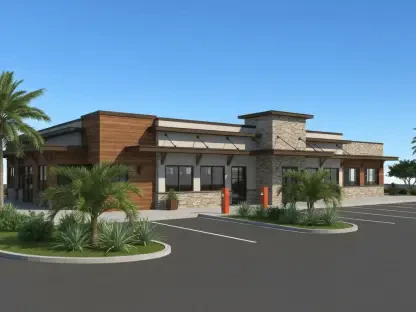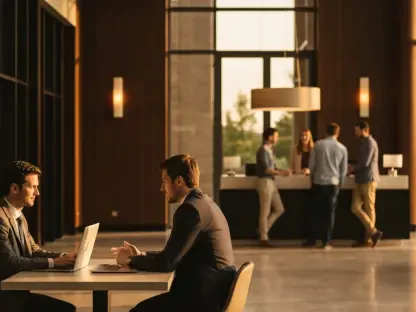I’m thrilled to sit down with Katarina Railko, a seasoned expert in the hospitality and travel industry. With her extensive background in tourism and a deep passion for entertainment and events, including expos and conferences, Katarina has become a trusted voice in understanding the intricate dynamics of this sector. Today, we’ll dive into the aftermath of the longest U.S. government shutdown in history, which lasted 43 days, and explore its profound impact on hotels, airports, local economies, and traveler confidence. Our conversation will unpack the economic losses, the challenges faced by small businesses, and the urgent need for long-term stability in government operations to support this vital industry.
Can you walk us through how the 43-day government shutdown impacted the hotel industry as a whole?
I’m glad to shed light on this. The shutdown was a real blow to the hotel industry, creating a ripple effect across the board. With federal workers furloughed and government operations stalled, travel—especially business travel tied to government contracts—came to a screeching halt in many areas. Hotels near federal hubs or in tourist-heavy regions saw occupancy rates plummet. Beyond that, the uncertainty deterred leisure travelers too, as people worried about disruptions at airports or national parks. It wasn’t just about empty rooms; it was also about canceled events, reduced restaurant revenue, and stalled investments in hotel properties.
What specific challenges did hotel owners face during this period, and how did small businesses in the hospitality sector cope?
Hotel owners, particularly those running smaller, independent properties, were hit hard. Many faced cash flow issues because they couldn’t count on steady bookings. Fixed costs like staff wages, utilities, and mortgages didn’t stop, even if revenue did. For small businesses in hospitality—think family-run motels or local bed-and-breakfasts—the shutdown meant laying off staff or cutting hours, which is heartbreaking when your team feels like family. Some owners dipped into personal savings just to keep the lights on, while others couldn’t secure loans due to the economic uncertainty. It was a daily struggle to survive.
AAHOA reported that the shutdown cost the U.S. economy about $31 million per day in hotel-related activity. Can you explain what kinds of losses contributed to that staggering number?
Absolutely. That $31 million daily figure captures a wide range of losses. It includes direct revenue drops from fewer room bookings, especially in markets reliant on government travelers. Then there’s the loss from canceled meetings, conferences, and events—hotels often host these, and they bring in big bucks through catering and space rentals. Add to that the reduced spending in hotel restaurants and bars, as well as ripple effects on suppliers like linen services or food vendors who depend on hotel orders. It’s not just the hotels themselves; it’s the entire ecosystem around them that took a hit, day after day.
Were certain regions or types of hotels more affected by these economic losses than others?
Definitely. Hotels in areas with a heavy federal presence, like Washington, D.C., or near military bases, saw some of the worst impacts because their clientele often includes government workers or contractors. Budget and mid-tier hotels, which cater to cost-conscious business travelers, were also more vulnerable compared to luxury properties that might have a buffer with international or high-end leisure guests. Geographically, rural areas dependent on national park tourism suffered too, as park closures during the shutdown kept visitors away. The pain wasn’t evenly distributed; it really depended on location and market segment.
Laura Lee Blake from AAHOA described the shutdown as delivering a ‘palpable jolt’ to local economies. Can you elaborate on what that means for communities reliant on hospitality jobs?
That phrase really captures the shockwave felt in these communities. Hospitality jobs—think housekeepers, front desk staff, cooks—are often the backbone of local economies, especially in smaller towns or tourist destinations. When hotels lose business, these workers face reduced hours or layoffs, which means less money circulating in the community. Local shops, diners, and service providers feel the pinch too, as spending dries up. It’s a domino effect: a hotel slows down, a family can’t pay bills, and suddenly the whole town is struggling. It’s not just numbers on a spreadsheet; it’s real lives disrupted.
Rosanna Maietta from the American Hotel & Lodging Association highlighted that nearly 20 percent of Americans altered or canceled Thanksgiving travel plans due to the shutdown. How did this affect consumer confidence in the travel industry?
It was a significant dent in consumer confidence. When people hear about a government shutdown, they start worrying about practical things: Will airports be understaffed? Will security lines be chaotic? Are national attractions even open? That uncertainty led many to rethink holiday travel plans, especially around Thanksgiving, which is a peak period for family trips. This hesitancy doesn’t just hurt immediate bookings; it plants a seed of doubt about future travel. People start wondering if they can rely on a smooth experience, and that mistrust lingers even after the shutdown ends.
The American Hotel & Lodging Association has called for a long-term budget agreement from Congress. Why is this kind of stability so crucial for the hotel and travel sectors?
Stability is everything in our industry. Hotels and travel businesses thrive on predictability—people plan trips months in advance, and owners make investment decisions based on economic forecasts. A long-term budget agreement means we’re not lurching from one crisis to the next, worrying about another shutdown around the corner. It reassures investors, supports job creation, and lets us focus on growth rather than damage control. Without it, the industry risks more losses, and small businesses, which often lack the reserves to weather these storms, are especially vulnerable.
Kevin Burke from Airports Council International – North America mentioned ‘significant uncertainty’ for airports during the shutdown. Can you describe the kinds of disruptions airports faced and how they impacted travelers?
Airports were in a tough spot during the shutdown. With federal employees like TSA agents and air traffic controllers working without pay or being furloughed, there were staffing shortages that led to longer security lines and delayed flights. Some smaller airports had to close certain checkpoints altogether. For travelers, this meant missed connections, canceled plans, and a lot of frustration. Beyond the immediate hassles, it created a perception that air travel was unreliable, which is a problem for an industry that depends on trust and efficiency. It was a challenging time for everyone involved.
Looking ahead, what is your forecast for the recovery of the hospitality and travel industry after this unprecedented shutdown?
I’m cautiously optimistic. The reopening of the government is a huge relief, and we’re already seeing some pent-up demand as travelers regain confidence. However, recovery won’t be instant—local economies need time to rebuild, and businesses that cut staff or services will need support to ramp back up. Consumer trust will take a while to fully restore, especially if another shutdown looms. My forecast is that with proactive steps, like targeted marketing campaigns and government assurances of stability, the industry can bounce back stronger by mid-year. But we’ll need collaboration between industry leaders and policymakers to ensure we’re not caught off guard again.









